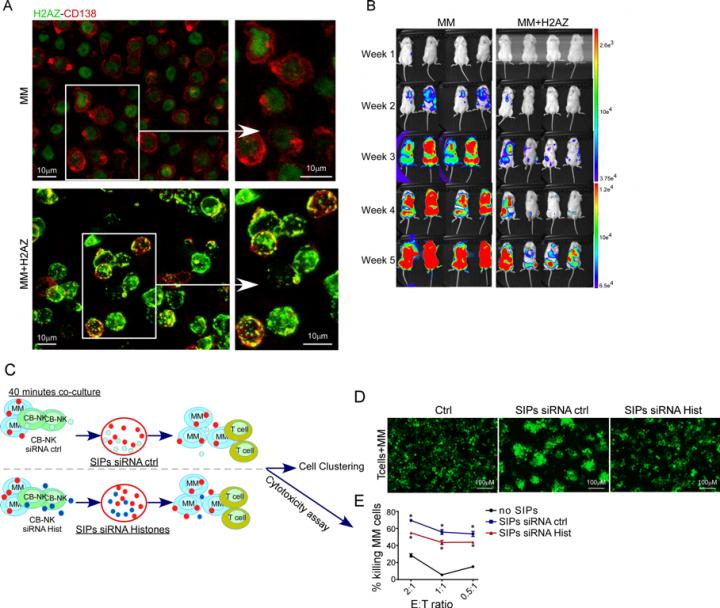
Credit: Beatriz Martín
NK cells mean Natural Killer cells. They are part of the innate immune system. They are known primarily for their ability to recognize and kill tumor cells, cells infected by viruses and bacteria, or dying by apoptosis. Although evidence about their antitumoral capacity, how this activity occurred remained unknown.
The Stem cell transplant and cell immunotherapy group of the Josep Carreras Leukemia Research Institute (IJC), in a joint investigation with the Hospital Clinic Foundation of Barcelona, has recently revealed this mystery in myeloma, collected in a scientific article.
Before this investigation, in another article published by the same group, they appreciated that when NKs came into contact with myeloma tumor cells, NKs adhered to them, and there was a transfer of molecules between both cells. Still, they did not know which were those molecules. In the most recent investigation, they discovered that NKs, after contact with myeloma cells, released histones that bind to myeloma cells through CD138 receptors, which are much more numerous in myeloma cells than in other cell types.
Histones are proteins whose primary function is to associate with DNA to pack it in the cell nucleus, but also have antitumor capacity inside the tumoral cells.
Once linked to CD138, histones penetrate myeloma cells. What researchers have discovered is that they promote aggregation between tumor cells to form clusters, which expose them to a more effective immune attack, while they also improve the call of T lymphocytes, increasing the antitumor activity.
This study demonstrates that when an NK cell meets a myeloma cell, the NK cell binds to the CD138 receptor on the myeloma cell surface and transfers histones. Histones move inside the cell, exert their antitumor activity, promote myeloma cells agglutination in clusters, and attract T lymphocytes to the battlefield — a whole military strategy of the immune system.
###
Media Contact
Isabel Troytiño
[email protected]
34-636-761-712
Related Journal Article
http://dx.




